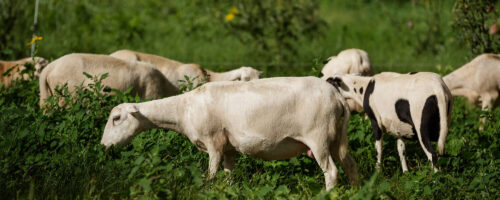What is the Water Cycle?
Your regenerative ranch — and just about everything else — depends on it.
Water moves and is recycled from one form or one storage area to another in the process we call the water cycle. This cycle is the mechanism by which water moves around the globe and in our atmosphere. And as a continuous cycle, it has no starting or stopping point.
Ranchers need to capture as much of the water that falls on their ranch and then use it wisely. To inform our management decisions, let’s look at how the cycle functions.

Water cycle basics
Most of Earth’s water is in the oceans, and as such, is saltwater. Only 2.5% of the total water on earth is freshwater, making it a limited resource that should be protected and preserved for the highest and best uses. Of that 2.5%, a majority of freshwater (70%) is trapped in glaciers or ice caps. Most of the remaining freshwater is in underground aquifers. A very small fraction of all water 0.03%, is held as surface water in lakes, rivers and wetlands.
Solar heating is the driving force of the water cycle. As oceans and freshwater are heated by the sun, some of the water evaporates into the air. Air currents transport the water vapor through the atmosphere, along with water that is transpired from plants and evaporated from the soil. Once the water rises into the atmosphere, it cools and forms clouds.

Global air currents move clouds around the earth, eventually leading to precipitation in the form of rain, snow, ice, sleet and hail. Frozen precipitation that falls near the earth’s poles can be locked up in polar ice caps and glaciers, making that water unavailable for thousands of years. Snowfall at higher altitudes on the continents may return to a liquid state as temperatures warm and the snow melts, eventually reaching a freshwater system.
The majority of precipitation falls in the oceans or back onto land. Gravity moves the precipitation that falls on land across the landscape into streams, lakes, wetlands and other freshwater sources. This is called surface water runoff. Not all the precipitation runs off. Some of it soaks into the soil or flows into underground aquifers.

How to help the cycle
Where precipitation meets the land is the point in the water cycle where ranchers can influence available water for plants and animals. Through good management, ranchers can capture and retain more water.
- Implementing the six soil health principles can reduce evaporation and increase water infiltration.
- Keeping the soil covered with living plants or plant residues reduces evaporation and surface runoff that can erode the soil.
- Moderating soil surface temperatures with good soil cover keeps soil cooler and reduces evaporative losses from the soil.
- Infiltration and water-holding capacity are best when soils have good structure, meaning there are soil aggregates and pores for water to fill.
- Minimizing disturbance, keeping a living root in the ground for as long as possible and maintaining plant diversity are practices that build soil structure and increase water-holding capacity.
- Increasing organic matter by just 1% increases the soil’s ability to hold water by 20,000 gallons per acre per year. Imagine how much forage per acre could be supported with an additional 20,000 gallons of water.
Water is one of the most precious resources on earth. Ranchers can increase the success, profitability and resilience of ranches by understanding the water cycle, minimizing evaporative losses and capturing as much water as possible.



Comment